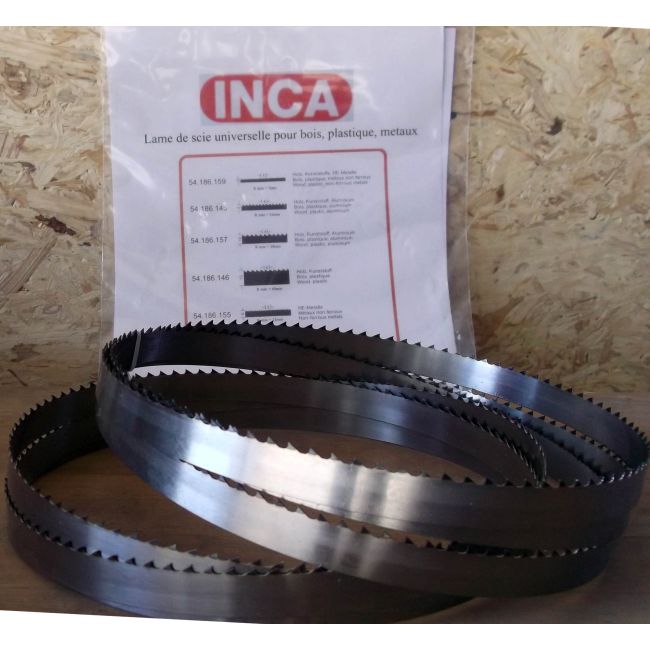93 inch bandsaw blades (2360mm) (Pack of 2)
Kity 673,Baileigh BS-712MS; Excel PBS180; Naerok BH173, 712; NuTool BS14, 712; Scheppach Basato 3; Sealey SM35; Startrite S301,The blades displayed on this page are 93 inch bandsaw blades (2360mm) in length. They are made available in packs of two.
Require a different, custom length? We're able to custom make a band-saw blade to your requirements at no extra cost, please click here.
Why choose Inca? Click here to know more.
Inca Woodworking machines - we have got a reputation for putting together high quality merchandize -- these bandsaw blades are not any different. These are manufactured to last longer, we have analyzed a lot of band saw blades and these blades survive 5 fold more in comparison with our competition. That is certainly five less times in which you will have to visit to your sharpener and then pay out to get your current saw blade sharp.
Precisely how can Inca have accomplished this feet? The idea starts by simply making use of quality supplies, we all solely work with the best European steel (British and Swedish) and create our blades within France with our specialist staff. In fact, with around seventy five years in the wood working industry, we fully understand exactly how important a good blade is. Why purchase the finest bandsaw and next get a shoddy blade? All of us have witnessed this scenario take place-- you purchase the finest bandsaw in the industry and later obtain an awful blade and most of the time the saw will be faulted! You need your own piece of equipment to perform, very well, effortlessly and continuously.
We all exclusively sells blades specially designed to cut wood, in the event that you're searching for metal cutting blades the fact is Inca Machines is not the place for you. The blade is offered in 3 TPI, 4TPI, 6TPI and 14TPI. If the following just isn't the size you're wanting for then simply just take a look at the customized blade section, exactly where we will create a good blade to your own specifications at simply no extra cost!
You will need to opt for the blade for your needs, choosing the suitable width, thickness and teeth for the saw will make a world of difference. To begin with, consider what you are going to use the blade for. There's certainly no 'one blade fits all' option.
> Blade Thickness:
Any time it comes to blade thickness, in the event that you happen to be mainly re-sawing or cut-off sawing we would certainly recommend that you just choose the max thickness feasible, so you may obtain an excellent feed level and a very good straight cut without breaking your own blade. Thick blades may conveniently take straight cuts yet have considerably more troubles if twisting or bending.
That is definitely where a good thinner blade is very useful -- You would need to work with any thinner blade whenever you are radius cutting. It is important to get the proper equilibrium, somewhere between thick and thin, even experienced woodworkersdo have a tendency to use the thicker blades as they may be cutting a solid piece of wood, that may be the wrong approach. Failure to settle on the proper blade can end up in the blade heating and cooling in the end weakening the blade and leading to failure.
Teeth per inch:
Just as before, picking out the correct teeth per inch is crucial and very much related to the job at hand. Would you like to have the ability to cut through the wood speedily -- in which case the lowest TPI (Minimum 3TPI) will deliver a rough finish a let you cut speedily. On the flip side, if it is vital that you slice the wood that has a smooth finish, an increased TPI with a slow cut can do the job!
Length:
The above mentioned blades will be 93inches/ 2362mm in length. Refer to your manual which came together with your band saw to make sure you've picked the appropriate length. In case a 93 inch blade is too long or small you will either be unable to adequately stress the blade or perhaps the blade won't fit the bandsaw.
Blade Maintenance
Lastly, remember to maintain your blade when working with it! You will get more use from your blade by ensuring that you have been de-tensioning the blade after you have used it. Your blade will get hot when cutting, this leads to the blade expanding and contracting which could lead to metal failure significantly sooner than expected.

 French
French



